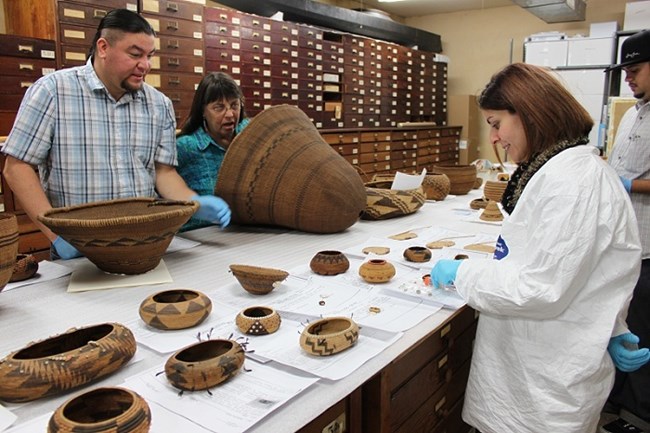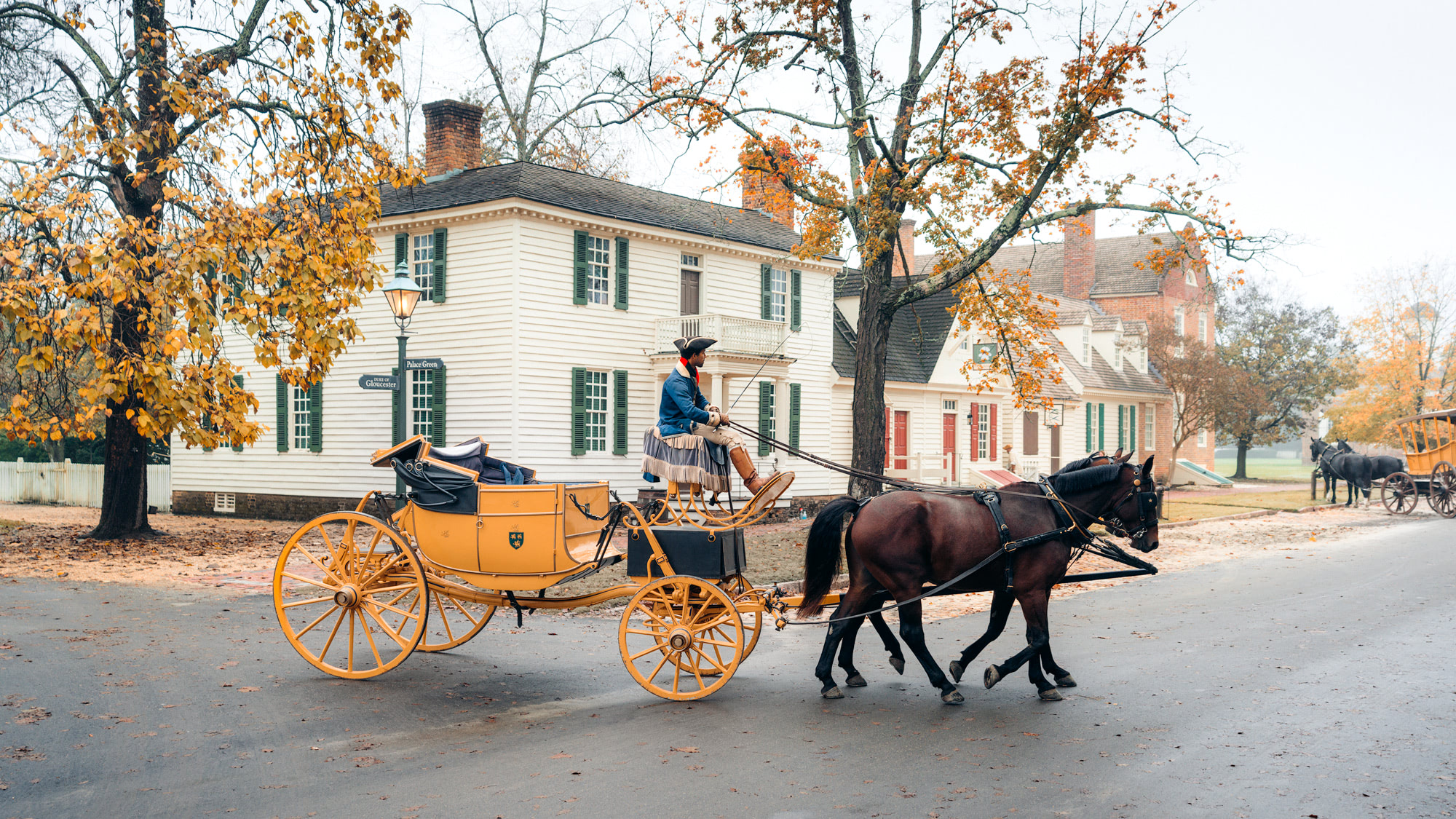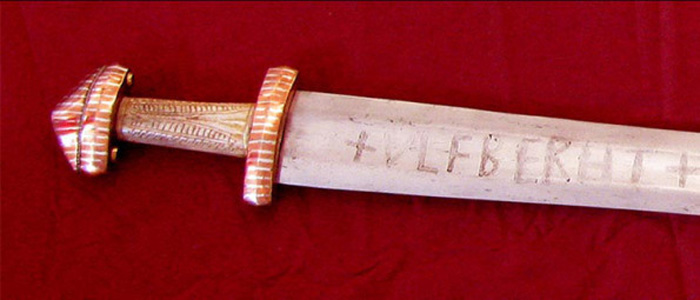museums, not people.
Records of enduring value—such as letters, reports, accounts, minute books, drafts and final manuscripts, and photographs—of people, businesses, and government.
What are archives?

This 1966 US law gives individuals the right to request access to federal records. Under this law, agencies must release any information that is requested unless the information is protected from disclosure by other laws, such as privacy laws. The law also requires agencies to automatically release certain information based on public need and use.
What is the Freedom of Information Act (FOIA)? (Lyon, et al., 62)
A challenging method of audience engagement in which workers who research historical figures and/or periods wear the clothes people might have worn and speak to visitors as if they actually lived in a different time period.
What is first-person interpretation (Lyon, et al., 115)
Also acceptable: What is living history (Lyon, et al, 115)
In exhibit design or other interpretative environments, this two-word term refers to “a written statement of what the exhibit will be about.” In other words, it’s the thesis for the exhibition.
What is a big idea? (Lyon, et al., 91-93)
Museum studies show that many adult museum visitors actually learn more when they experience these at public history sites. Visitor might be confronted with ambiguous narratives, debatable ethical issues, and facts that might simply disturb them.

What are difficult encounters? (Lyon, et al., 124)
Housewares, textiles, crafts, and machinery are just some examples of this, a two-word term for objects from specific times and places that museums and historic sites use and interpret to communicate stories about the past.

What is material culture? (Lyon, et al., 62, 98)
This act requires federal agencies and institutions that receive federal funding to return (repatriate) Native American "cultural items" to lineal descendants and culturally affiliated American Indian tribes, Alaska Native villages, and Native Hawaiian organizations. Cultural items include human remains, funerary objects, sacred objects, and objects of cultural patrimony. It also establishes procedures for the inadvertent discovery or planned excavation of Native American cultural items on federal or tribal lands. Lastly, it makes it a criminal offense to traffic in Native American human remains without right of possession or in Native American cultural items obtained in violation of the Act.
What is the Native American Graves Protection and Repatriation Act (NAGPRA) (1990)? (Lyon, et al., 69)

The most common interpretive technique, whereby knowledgeable staff members and volunteers provide information to visitors and speak and write as their modern-day selves; they do not play the role of a historical character.
What is third-person interpretation? (Lyon, et al., 114)
Becoming more commonplace, this panel acknowledges different members of the team for their respective work, as well as outside reviewers, consultants, and anyone else who played a role in the final product (beyond funders).
What is a credit panel? (Lyon, et al, 96)
Often used as a term to describe ordinary architecture and landscapes, representing 95% of the world's built environment.

What is vernacular? (Lyon, et al., 59)
An object that was there during the events and the times that an exhibition attempts to explain.
Pictured: WWI Dog Tag Stamping Kit (Bullock Museum, TX)

What is a witnessing object? (Lyon, et al., 89-90)
The official list of the Nation's historic places worthy of preservation. Authorized by the National Historic Preservation Act of 1966, this is part of a national program to coordinate and support public and private efforts to identify, evaluate, and protect America's historic and archeological resources.
What is the National Register of Historic Places (NHRP)?
A living history museum that is spread out over a large area representing a historical town or village.

What is an open-air museum? (Lyon, et al., 115)
The necessary information to simply identify the artifact, explaining to a visitor what the object is, who made it, what it’s made of, and an accession number.
What is the object identification? (Lyon, et al., 96)
These types of paper luggage tags that are used as a form of visitor participation. The tags, with some type of visitor feedback, can be affixed by a string where the visitor chooses at a historic site.
What are anarchist tags? (Lyon, et al., 117-118)
Note: this is a type of fingerprinting (study this term, as well!), a term for a radical approach to visitor participation which allows guests to individualize their experiences and leave marks at historic sites, such as allowing visitors to write on the wall of a historic house, to capture photographs, or to spend the night in a room on site. (Lyon, et al., 118)
A witnessing object that was there during the events and the times that an exhibition attempts to explain; however, unlike the average witnessing object, this type of object is often connected to a famous person.
What is a lineage object? (Lyon, et al., 98)
Example (below): "Legbiter," the sword of Viking King Magnus III

A global network of historic sites, museums, and memorials that is dedicated to promote and protect human rights in different regions of the world. The network began as a movement in 1999 to engage historic sites "in programs that stimulate dialogue on pressing social issues."
What is the International Coalition of Sites of Conscience? (Lyon, et al., 120)
What is place-based storytelling?
A panel that gives visitors a better understanding of the layout of an exhibition and an opportunity to spend their time in areas of most interest to them
What is an orientation panel? (Lyon, et al., 96)
The real and meaningful connection to the past that is sought by visitors to historic sites.
What is authentic / authenticity? (Lyon, et al., 119)
Speaking of above-average stuff, this particular exchange refers to a 1970s debate between an urban sociologist and an architectural critic about what types of architecture should and shouldn't be preserved.
What is the Gans-Huxtable debate? (Lyon, et al., 60)
Museum exhibits play an important role in the transmission of historical knowledge. These standards encourage historians, museum curators, administrators, and members of museum boards to develop historical exhibits which encourage the informed discussion of their content and the broader issues of historical significance they raise. These standards, in large part, arose out of the Smithsonian Enola Gay controversy (1994-2003) that we studied in class.
What are the Standards for Museum Exhibits Dealing with Historical Subjects (last updated 2017)? (Lyon, et al., 104-105)
A newer method of audience engagement in which visitors themselves play parts in the stories being told. At the U.S. Holocaust Memorial Museum, for example, visitor identity cards that are distributed to visitors to follow through the story of someone who experienced the Holocaust.
What is second-person interpretation? (Lyon, et al., 115)
You've been tricked. This question has NOTHING to do with labels (okay, maybe a little). Collections managers such as archivists and museum registrars take in new items (___?___) and get rid of old ones (___?___). Sometimes information related to the first part is included in an object identification.
What are accession and deaccession?
This type of evaluation occurs near the conclusion of an exhibition or program and allows the team to evaluate whether the exhibition achieved its goals and to discover whether or not the public was satisfied with the exhibition, how they used it, and what their overall impression was.
What is summative evaluation? (Lyon, et al., 106)